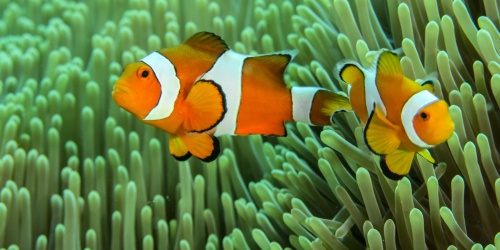
Lion Fish - Photo Vitalii6447 / Adobe
What is a butterfly cod? Butterfly cod are spectacular fish with brilliant colouring and long defensive spiny fins. They are part of the scorpionfish family, but unlike other members of this family which often rely on camouflage for protection, they swim freely around coral reefs, leaving their venomous fins to give them 360° protection. They include the firefish (Pterois species) and lionfish (Dendrochirus species).
What do they look like? Butterfly cod are characterised by their long, spiny fins. The dorsal, anal and pelvic fins are all venomous. These brightly-coloured fish grow up to 30 centimetres long.
Where are they found? Butterfly cod are predominantly found in tropical and subtropical waters. Smaller animals may be seen in temperate waters due to larvae getting caught in currents, but usually don’t survive the cooler winter months.
Behaviour: Butterfly cod are nocturnal animals, becoming active when the sun sets. During the day they are mostly stationary. They show little fear of divers and often orientate their body so that their dorsal fins point forward in a defensive pose. They feed mostly on crustaceans but may consume fish including juveniles of their own species.
Threats: These fish are not listed as threatened. However, like other tropical sea creatures, their coral reef habitats are under threat from the effects of climate change and the resultant ocean acidification.
Breeding and caring for young: There is a courting period where males congregate around and fight over fertile females. Females release thousands of eggs (in tubes of mucous) into the water. The male fish then releases sperm, which is capable of penetrating the mucous and fertilising the eggs inside. The larvae soon hatch.
Precautions: Butterfly cod are not aggressive towards people. The long venomous spines are purely defensive. Injury prevention is simple; don’t run into these animals. Stay at least a metre away when observing them, so you are not putting yourself at risk. Show some respect to these beautiful animals and they will leave you alone.
Treatment: Wounds from the spines of butterfly cod can result in unbelievable agony. The injured limb should be placed in water as hot as can be tolerated to help alleviate the pain. Immediate medical aid is recommended, as a local anaesthetic may be needed for the pain.
How you can protect butterfly cod: Help do your bit to reduce the effects of climate change! Simple actions such as turning off lights when they aren’t being used, reducing your power use and even walking to school CAN make a difference.



























